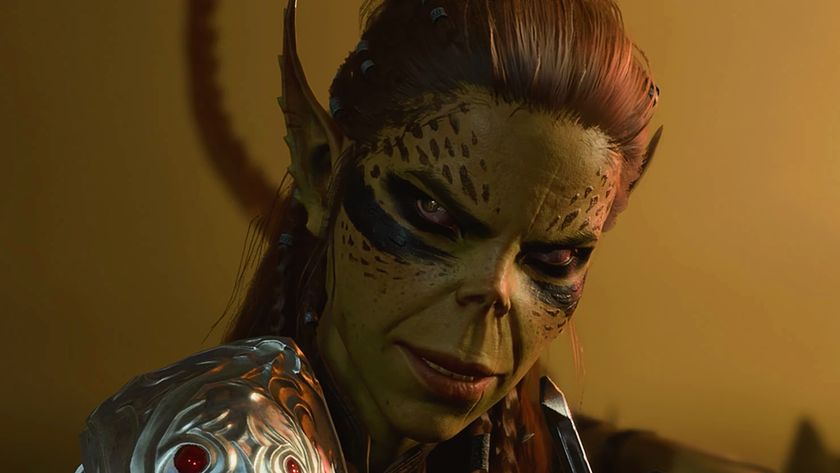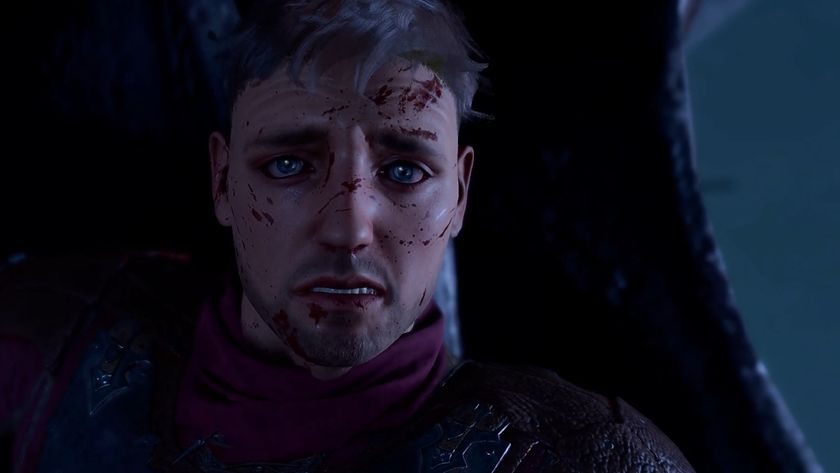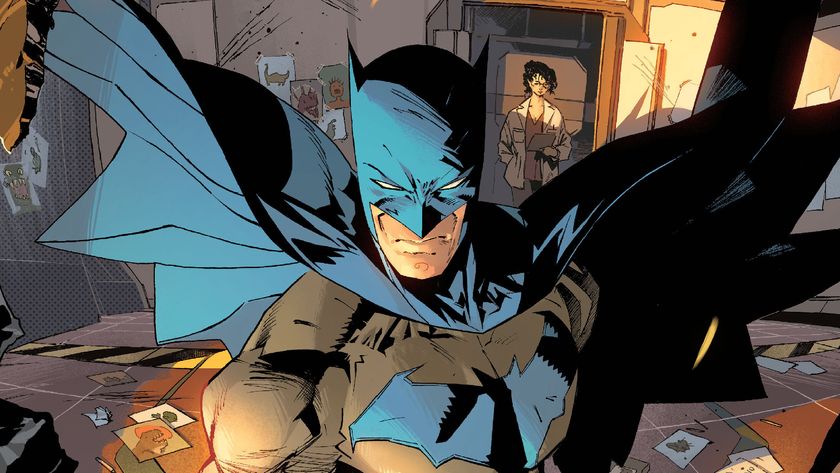Looking back: The Legend of Zelda
We dissect each and every game in this legendary franchise
The Legend of Zelda: Majora's Mask | N64 (2000) | GC (2003)
Following the immense success of Ocarina, Nintendo decided to shake things up by destroying the world. Not Hyrule of course, but a nowhere place called Termina.
The legend: Young Ocarina Link is kidnapped and dumped into a bizarre anti-Hyrule known as Termina. His abductor, the Skull Kid, transforms Link into a puny plant creature, steals the Ocarina of Time and jets off. After three long days of searching, Link finds the Skull Kid, reclaims the Ocarina and uses it to plunge three days into the past - the very day he arrived there. There he learns that the Skull Kid has been possessed by an evil artifact, Majora's Mask, and has coaxed the moon out of orbit. In three days, it's going to crash into the planet and destroy everything. After using the Ocarina's time-hopping song to repeatedly relive the same three days, Link is able to revive four giants capable of stalling the moon while he vanquishes Majora's Mask.
Master swords: With a grip of recycled graphics and sound effects, Majora's Mask initially appears to be a quick cash-in on Ocarina's unprecedented success. Anyone who spent more than an hour playing, however, realized this follow-up changed things around so much that it barely felt like Ocarina of Time at all. In addition to the back-and-forth time swapping, Link also had access to three shape-shifting masks that morphed him into either a Deku scrub, a burly Goron or wave-riding Zora. These abilities replaced enhancements Link usually received in previous Zelda titles. As a result, most of the late-game puzzles revolved around swapping masks over and over again.
That phrase, "over and over," became quite familiar while playing. For Link to stop the descending moon, defeat the Mask and return to Hyrule, you had to re-live these same three days until you got it all right. This meant re-playing many parts of the game, with each trip revealing a bit more. Certain people and areas could only be met at certain times of the day - some even restricted their interaction to just once per three-day cycle. Some gamers loved it, others... not so much. Reported sales were still in the millions, but half of its predecessor. If nothing else, the game's dark overtones and bizarre storytelling made it stand out from Ocarina, a feat that would have been nearly impossible if it had been a more traditional Zelda. It was an unpredictable risk, but the concept worked.
Best moment: No scene sums up the Majora's Mask experience quite like this.
I AM ERROR: After playing as an adult Link, fans wanted more. Instead they got young Link playing dress-up. A slow start as a powerless Deku kid makes the first hour or so extremely boring and fetch-heavy. The graphics and sound, while excellent in 1998, were already dated by 2000. This fact was even more apparent considering the PS2 launched just before this game did, making the visuals all the more disappointing. Oh, and Tingle. Dear god, Tingle.
Sign up to the 12DOVE Newsletter
Weekly digests, tales from the communities you love, and more
It's a secret to everybody: As a late N64 title, it was one of a handful of games that required an Expansion Pak to play. This obviously hurt the sales potential, but the extra boost did allow for minor visual effects and more varied textures - Majora's Mask came in a gold cart, but early buyers received a gold cart with a special lenticular label
Hero of Time? Majora's Mask gets points for sheer creativity and a willingness to deliver something totally different. It's a wonderfully diverse adventure that (sadly) alienated more people than it entertained. It's off-putting at first, but those who make the journey will recall it fondly. We're obviously of the latter group, though admittedly not about to dive into Termina again for some time. 9/10
Following the immense success of Ocarina, Nintendo decided to shake things up by destroying the world. Not Hyrule of course, but a nowhere place called Termina.
The legend: Young Ocarina Link is kidnapped and dumped into a bizarre anti-Hyrule known as Termina. His abductor, the Skull Kid, transforms Link into a puny plant creature, steals the Ocarina of Time and jets off. After three long days of searching, Link finds the Skull Kid, reclaims the Ocarina and uses it to plunge three days into the past - the very day he arrived there. There he learns that the Skull Kid has been possessed by an evil artifact, Majora's Mask, and has coaxed the moon out of orbit. In three days, it's going to crash into the planet and destroy everything. After using the Ocarina's time-hopping song to repeatedly relive the same three days, Link is able to revive four giants capable of stalling the moon while he vanquishes Majora's Mask.
Master swords: With a grip of recycled graphics and sound effects, Majora's Mask initially appears to be a quick cash-in on Ocarina's unprecedented success. Anyone who spent more than an hour playing, however, realized this follow-up changed things around so much that it barely felt like Ocarina of Time at all. In addition to the back-and-forth time swapping, Link also had access to three shape-shifting masks that morphed him into either a Deku scrub, a burly Goron or wave-riding Zora. These abilities replaced enhancements Link usually received in previous Zelda titles. As a result, most of the late-game puzzles revolved around swapping masks over and over again.
That phrase, "over and over," became quite familiar while playing. For Link to stop the descending moon, defeat the Mask and return to Hyrule, you had to re-live these same three days until you got it all right. This meant re-playing many parts of the game, with each trip revealing a bit more. Certain people and areas could only be met at certain times of the day - some even restricted their interaction to just once per three-day cycle. Some gamers loved it, others... not so much. Reported sales were still in the millions, but half of its predecessor. If nothing else, the game's dark overtones and bizarre storytelling made it stand out from Ocarina, a feat that would have been nearly impossible if it had been a more traditional Zelda. It was an unpredictable risk, but the concept worked.
Best moment: No scene sums up the Majora's Mask experience quite like this.
I AM ERROR: After playing as an adult Link, fans wanted more. Instead they got young Link playing dress-up. A slow start as a powerless Deku kid makes the first hour or so extremely boring and fetch-heavy. The graphics and sound, while excellent in 1998, were already dated by 2000. This fact was even more apparent considering the PS2 launched just before this game did, making the visuals all the more disappointing. Oh, and Tingle. Dear god, Tingle.
It's a secret to everybody: As a late N64 title, it was one of a handful of games that required an Expansion Pak to play. This obviously hurt the sales potential, but the extra boost did allow for minor visual effects and more varied textures - Majora's Mask came in a gold cart, but early buyers received a gold cart with a special lenticular label
Hero of Time? Majora's Mask gets points for sheer creativity and a willingness to deliver something totally different. It's a wonderfully diverse adventure that (sadly) alienated more people than it entertained. It's off-putting at first, but those who make the journey will recall it fondly. We're obviously of the latter group, though admittedly not about to dive into Termina again for some time. 9/10
A fomer Executive Editor at GamesRadar, Brett also contributed content to many other Future gaming publications including Nintendo Power, PC Gamer and Official Xbox Magazine. Brett has worked at Capcom in several senior roles, is an experienced podcaster, and now works as a Senior Manager of Content Communications at PlayStation SIE.

Baldur's Gate 3 Lae'zel actor was "paranoid" about making the githyanki girlfriend’s voice "lower and lower" through Act 3 until she realized "it really works with her character development"

RPGs collide as Kingdom Come: Deliverance 2 player commissions Baldur's Gate 3 mod to play as Henry: "He’s just a Christian boy from medieval Bohemia and now there’s demons and fireballs"
Most Popular






